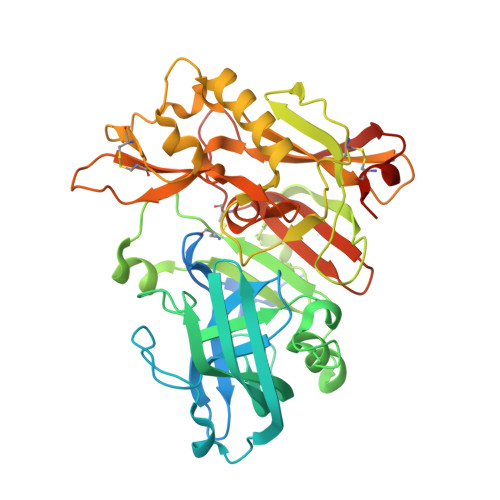Preparation and biological evaluation of conformationally constrained BACE1 inhibitors.
Winneroski, L.L., Schiffler, M.A., Erickson, J.A., May, P.C., Monk, S.A., Timm, D.E., Audia, J.E., Beck, J.P., Boggs, L.N., Borders, A.R., Boyer, R.D., Brier, R.A., Hudziak, K.J., Klimkowski, V.J., Garcia Losada, P., Mathes, B.M., Stout, S.L., Watson, B.M., Mergott, D.J.(2015) Bioorg Med Chem 23: 3260-3268
- PubMed: 26001341
- DOI: https://doi.org/10.1016/j.bmc.2015.04.062
- Primary Citation of Related Structures:
4ZSM, 4ZSP, 4ZSQ, 4ZSR - PubMed Abstract:
The BACE1 enzyme is a key target for Alzheimer's disease. During our BACE1 research efforts, fragment screening revealed that bicyclic thiazine 3 had low millimolar activity against BACE1. Analysis of the co-crystal structure of 3 suggested that potency could be increased through extension toward the S3 pocket and through conformational constraint of the thiazine core. Pursuit of S3-binding groups produced low micromolar inhibitor 6, which informed the S3-design for constrained analogs 7 and 8, themselves prepared via independent, multi-step synthetic routes. Biological characterization of BACE inhibitors 6-8 is described.
- Lilly Research Laboratories, A Division of Eli Lilly & Co., Lilly Corporate Center, Indianapolis, IN 46285, USA.
Organizational Affiliation:


















